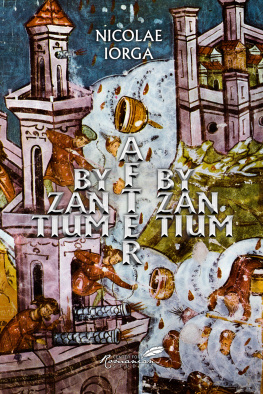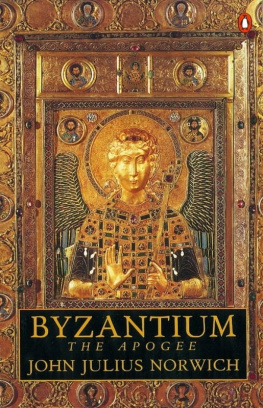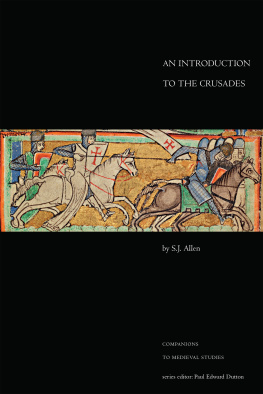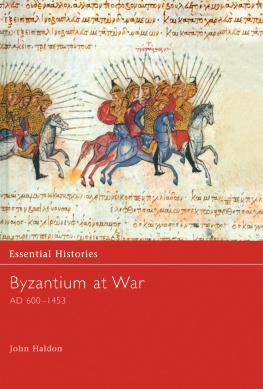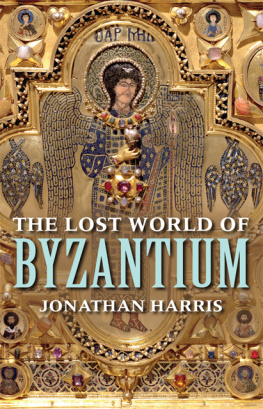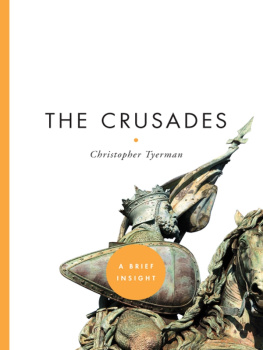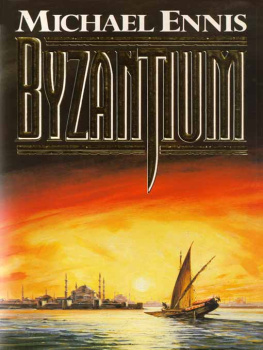Harris - Byzantium and the Crusades
Here you can read online Harris - Byzantium and the Crusades full text of the book (entire story) in english for free. Download pdf and epub, get meaning, cover and reviews about this ebook. City: London;New York;Bizantyjskie;Cesarstwo, year: 2014, publisher: Bloomsbury UK;Bloomsbury Academic, genre: Religion. Description of the work, (preface) as well as reviews are available. Best literature library LitArk.com created for fans of good reading and offers a wide selection of genres:
Romance novel
Science fiction
Adventure
Detective
Science
History
Home and family
Prose
Art
Politics
Computer
Non-fiction
Religion
Business
Children
Humor
Choose a favorite category and find really read worthwhile books. Enjoy immersion in the world of imagination, feel the emotions of the characters or learn something new for yourself, make an fascinating discovery.
Byzantium and the Crusades: summary, description and annotation
We offer to read an annotation, description, summary or preface (depends on what the author of the book "Byzantium and the Crusades" wrote himself). If you haven't found the necessary information about the book — write in the comments, we will try to find it.
Harris: author's other books
Who wrote Byzantium and the Crusades? Find out the surname, the name of the author of the book and a list of all author's works by series.
Byzantium and the Crusades — read online for free the complete book (whole text) full work
Below is the text of the book, divided by pages. System saving the place of the last page read, allows you to conveniently read the book "Byzantium and the Crusades" online for free, without having to search again every time where you left off. Put a bookmark, and you can go to the page where you finished reading at any time.
Font size:
Interval:
Bookmark:
Byzantium and the Crusades
Byzantium and the Crusades
Second Edition
Jonathan Harris

In Memory of Jan (19322003) and Phil (19252010)
CONTENTS
Cover: Byzantine emperor and his courtiers, c.1080 (Bibliothque Nationale, Paris, MS Coislin 79, fol. 2)
The Land Walls of Constantinople
The cathedral of Hagia Sophia, Constantinople
Tenth-century Byzantine copper coin with portrait of Christ
Byzantine enamel plaque of King Gza I of Hungary (10747)
The eastern gate in the walls of Nicaea
John II Komnenos (111843), from a mosaic in Hagia Sophia
The Pantokrator Monastery (Zeyrek Camii), Constantinople
Roger II, Norman king of Sicily
The Church of the Holy Sepulchre, Jerusalem
Marble roundel of a Byzantine emperor, Venice
Byzantine bas-relief of Hercules, Venice
Four bronze horses, Venice
Castle of Platamonas, Greece
Bromholm Priory, Norfolk
Deisis from Hagia Sophia
The port of Acre
The Byzantine empire, c.1050
The city of Constantinople
The Latin states of Syria and Palestine
The Byzantine empire, c.1150
The Latin empire of Constantinople and the successor states, c.1215
The Byzantine empire, c.1265
Since the first edition of Byzantium and the Crusades appeared in 2003, the eight-hundredth anniversary of the Fourth Crusade has produced a particularly rich crop of publications that explore many of the same questions. This new edition aims to take as much of this new scholarship as possible into account. That said, the main theme is unchanged and certainly I do not agree with all the novel arguments that have been advanced in recent years. I remain particularly unconvinced by the theories that Alexios I was intimately involved with the planning and directing of the First Crusade, that Michael Psellos and other Byzantine intellectuals were closet pagans and that the Latin empire of Constantinople was prosperous and stable.
During the rewriting process, the students who took my MA course options provided a constant flow of ideas and criticisms. I am indebted to David Jacoby, Paul Stephenson and a number of anonymous reviewers for pointing out errors and omissions in the first edition, to Eugenia Russell for drawing the maps, to Jonathan Phillips and Kroly Szelnyi for permission to use their photographs, and to Rhodri Mogford for suggesting and overseeing the new edition with Bloomsbury. A succession of heads of the History Department at Royal Holloway, Nigel Saul, Justin Champion and Sarah Ansari, gave great support and encouragement to me in my work. I should also record my continuing appreciation to Martin Sheppard and Tony Morris of Hambledon Press without whom the original book would never have appeared in the first place.
Finally, I should add that I have adopted a slightly different approach to the spelling of Byzantine names in the text and footnotes from that used in the first edition. In general, I have tried to transliterate them as closely as possible to the original Greek, Tornikios, rather than Tornicius, and Eustathios rather than Eustathius, but where there is a recognized English equivalent of a Greek first name, I have used it, hence Isaac rather than Isaakios, George rather than Georgios. I have done this not because I want to anglicize the Byzantines but because I want their history to be accessible to an international audience who will be more familiar with these versions. I have made certain personal choices such as Porphyrogenitos rather than Porphyrogennetos for the sole reason that, to my eyes, it looks better.
Royal Holloway
University of London
December 2013
969: Byzantine capture of Antioch
975: Campaign of John I Tzimiskes in Syria
1018: Byzantine conquest of Bulgaria
1027: Byzantine treaty with Fatimids; rebuilding of the Church of the Holy Sepulchre
1031: Byzantine capture of Edessa
1054: Cardinal Humbert excommunicates the patriarch of Constantinople
1071: Battle of Manzikert
1074: Treaty between Robert Guiscard and Michael VII Doukas
1081: Accession of Alexios I Komnenos
1083: Defeat of Robert Guiscard in the Balkans
1089: First embassy of Alexios I to Urban II
1091: Victory of Alexios I over the Pechenegs at Mount Levounion
1095: Second embassy of Alexios to Urban II; preaching of the First Crusade
1096: The crusaders begin to arrive in Constantinople
1097: Capture of Nicaea and Battle of Dorylaion
1098: Crusaders capture Antioch
1099: Fall of Jerusalem; Bohemond seizes Antioch
1106: Tancred captures Laodikeia
1107: Bohemond lands at Avlona
1108: Treaty of Devol
1118: Death of Alexios I; accession of John II Komnenos
1126: John II renews commercial treaty with Venice
1137: First expedition of John II to Antioch
1142: Second expedition of John II to Antioch
1143: Death of John II; accession of Manuel I Komnenos
1147: The Second Crusade passes through Constantinople
1159: Manuel Is expedition to Antioch
1169: Joint Byzantine-Crusader attack on Damietta
1171: Visit of Amalric of Jerusalem to Constantinople; arrest of Venetians
1174: Saladin unites Syria and Egypt under his rule
1180: Death of Manuel I Komnenos; regency for young Alexios II
1182: Andronicus Komnenos enters Constantinople; massacre of Latins
1183: Andronicus crowned as emperor
1185: Overthrow of Andronicus I by Isaac II Angelos
1187: Capture of Jerusalem by Saladin
1189: Frederick Barbarossa in the Byzantine Balkans
1190: Death of Frederick Barbarossa
1191: Richard the Lionheart captures Cyprus
1192: Third Crusade ends without capturing Jerusalem
1196: Emperor Henry VI demands Byzantine finance for the crusade
1198: Pope Innocent III calls the Fourth Crusade
1201: Alexios Angelos arrives in the West
1202: Fourth Crusade captures Zara
1203: Fourth Crusade arrives at Constantinople
1204: Capture and sack of Constantinople
1205: Battle of Adrianople
1208: Imperial coronation of Theodore Laskaris
1216: Death of Henry of Flanders
1218: Fifth Crusade sails for Egypt
1221: Death of Theodore Laskaris; accession of John III Vatatzes
1224: Theodore Angelos takes Thessalonica
1225: Battle of Poimamenon
1227: Launch of Sixth Crusade
1228: Treaty of Jaffa returns Jerusalem to Christian rule
1230: Battle of Klokotnitsa
1244: Second fall of Jerusalem; Battle of La Forbie
1246: John III Vatatzes takes Thessalonica
1250: Defeat of the Seventh Crusade in Egypt
1254: Death of John III Vatatzes
1258: Michael Palaiologos seizes power at Nicaea
1259: Battle of Pelagonia
1260: Mamluks defeat the Mongols at Ain Jalut
1261: Recapture of Constantinople by Michael VIII
1265: Charles of Anjou becomes king of Sicily
1267: Treaty of Viterbo between Charles of Anjou and Baldwin II
1268: Mamluk sultan Baibars captures Antioch
1270: Crusade of Louis IX to Tunis
1274: Council of Lyons
1277: Charles of Anjou becomes king of Jerusalem
1282: Sicilian Vespers; death of Michael VIII
1289: Mamluk sultan Qalawun captures Tripoli
1291: Fall of Acre


Font size:
Interval:
Bookmark:
Similar books «Byzantium and the Crusades»
Look at similar books to Byzantium and the Crusades. We have selected literature similar in name and meaning in the hope of providing readers with more options to find new, interesting, not yet read works.
Discussion, reviews of the book Byzantium and the Crusades and just readers' own opinions. Leave your comments, write what you think about the work, its meaning or the main characters. Specify what exactly you liked and what you didn't like, and why you think so.








